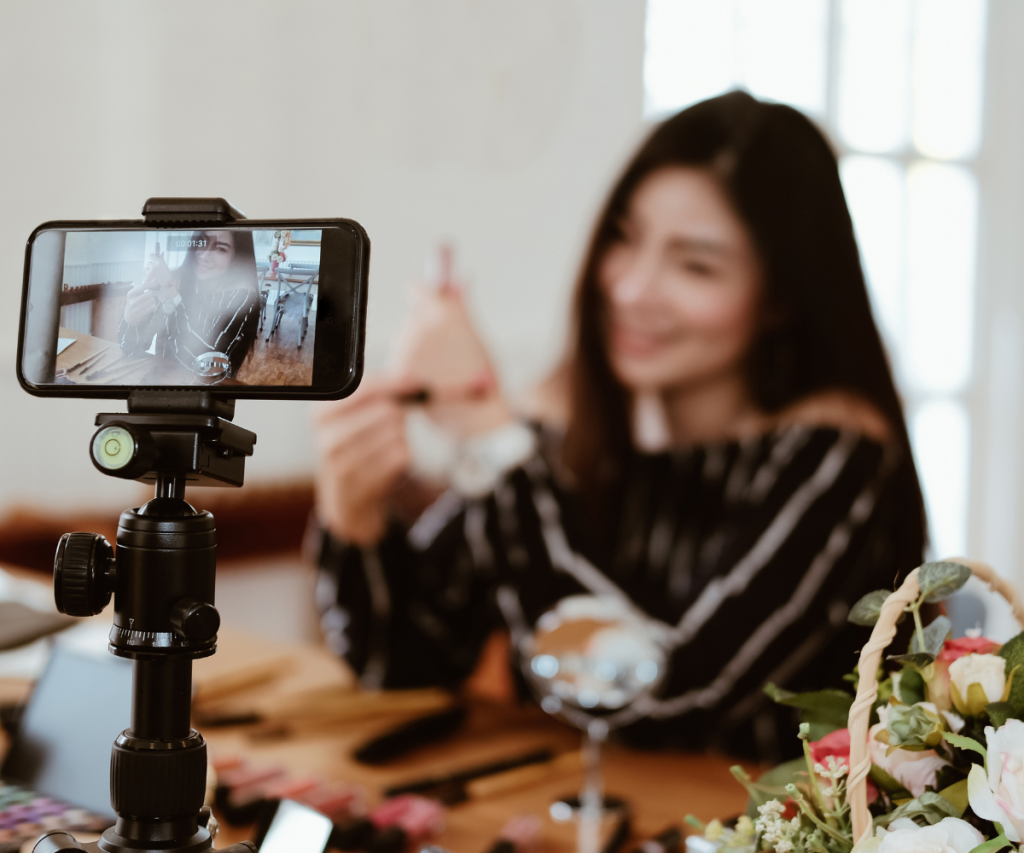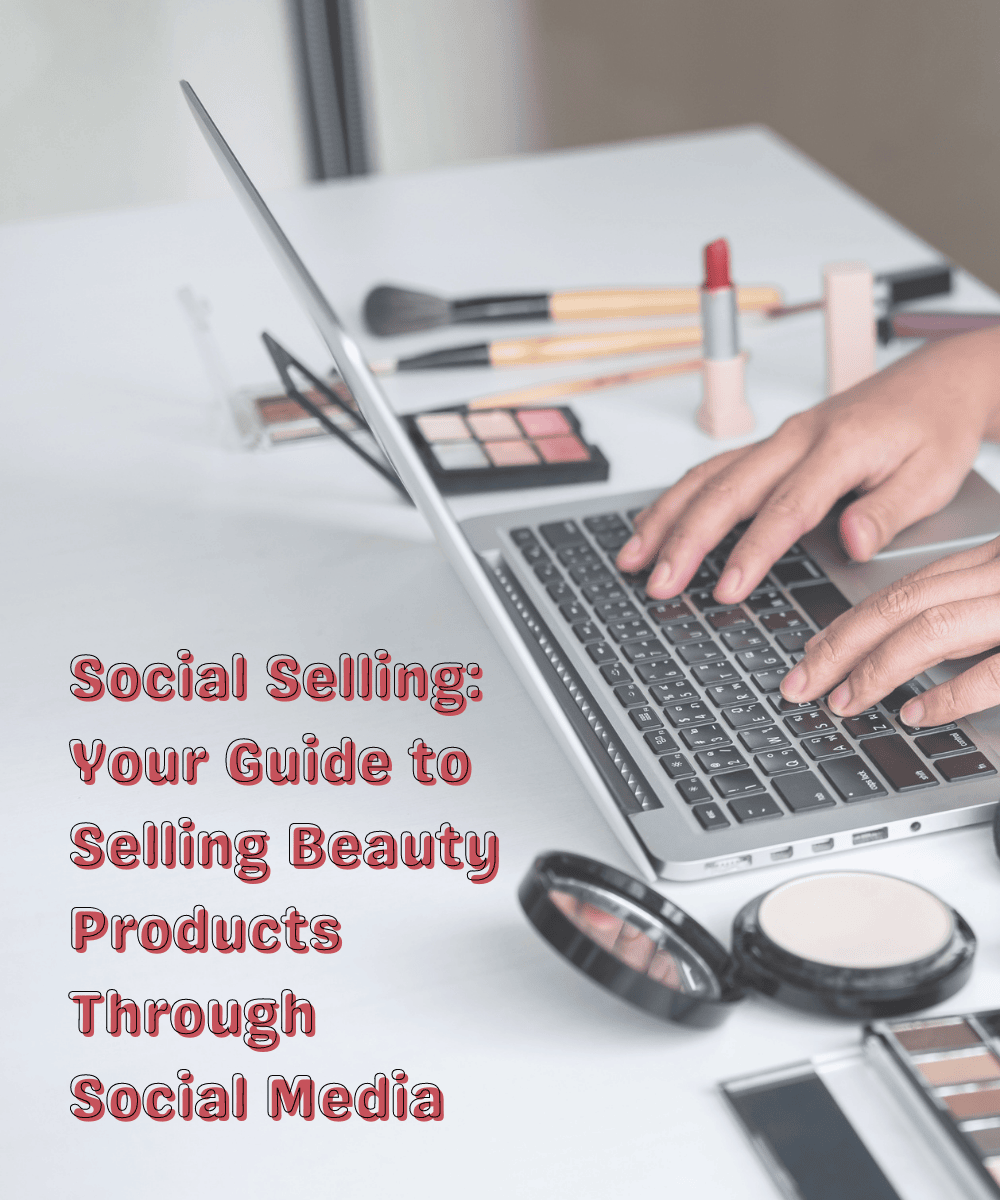Have you ever wondered how you can take advantage of social media to improve your sales figures?
The technique you’re looking for is called social selling, and we’re going to give you some tips that will help you to make the most of it.
What is Social Selling?
While you might think you already know all about social media marketing and advertising, social selling is an entirely different ball game.
It’s one of the most important emerging sales techniques, and is currently employed across a wide range of sectors, including the beauty industry. In a nutshell, it’s a means of identifying and developing sales leads through social media, by providing users with valuable content.
Most businesses practise social selling to some degree, whether they know or it or not. If your beauty business has a Facebook, Twitter or Instagram profile, you’re already engaging in social selling to some degree – but you may not be using it to its full potential. Don’t worry, though. We here to help you understand exactly how to reap the benefits of this effective sales method, and grow your beauty business online.
1: A New, Visual Sales Channel
Many social networks are primarily visual, and for obvious reasons, this is perfectly suited to the beauty sector. Platforms like Instagram provide businesses with a chance to create virtual ‘stores’ and ‘product displays’ through their content.
What’s more, the majority of social networks are facilitating direct sales, providing companies with an entirely new sales channel and revolutionising the way businesses interact with their customers.
2: Globalisation and Cross-Border Trends
Social media enables cultural trends to attract a global audience, and become worldwide phenomena. The rise of K-Pop and K-Beauty are two examples of this, and businesses can expand their global reach, selling related products in previously untapped markets.
3: Unprecedented Industry Growth
Undoubtedly, the beauty industry has benefitted from the advent of social media much more than others. Today, it’s one of the main ways that brands and businesses interact with their audience; the global beauty industry is currently valued at $569 billion, and is expected to be worth $758 billion by the year 2025.[1] Simply put, social media has led to a beauty industry boom, and allowed smaller businesses to grow at an exponential rate.

Social Selling Best Practices: Top Tips for Success!
1: Get to Know Your Target Market
If you’re going to use social media as a sales channel, you need to understand your audience and target market. Not all social networks are going to be a perfect fit for your business, so identify your target customer and start with their preferred network.
Once you’ve established which networks you’ll focus on, you need to start working out how your customers use the platform. How often do they use it and when? Which content types do they engage with the most? These are the sorts of questions you should be asking yourself.
2: Post Relevant and Useful Content
Users want value from the content they consume. Having watched a video or clicked through a photo gallery, they want to feel as though they’ve learnt something, or that the content is relevant to their lives.
One of the easiest ways of doing this is by creating beauty tutorials. Showing how you achieve a specific look or finish is engaging – it gives users something to work towards and speaks to their everyday lives.
Importantly, how-to videos allow you to market your products in a way that isn’t perceived as pushy or overly-commercial. Similar methods of achieving this include giveaways, competitions and participatory campaigns – it’s all about getting your followers engaged.
3: Think Visually to Showcase Your Products
Social media is a visual medium; just think about how you browse your feeds. There’s a lot of absent-minded scrolling until something really pops out at you and grabs your attention.
In every instance, your attention is captured by a visual stimulus.
This means that every image you post when selling beauty products on Facebook or Instagram needs to be carefully considered and thematically consistent. In essence, you want your ‘look’ to represent your brand.
An excellent place to start is by creating content that shows your product ‘in action.’ Rather than using static images, try GIFs, videos and dynamic graphics that demonstrate how products look when applied.
In other words, bring your products to life and let them capture the imagination of your audience.
4: Engage with Your Audience
Social media is a conversation. If you build up your followers only to preach at them or bombard them with sales material, you’re not social selling. You’re spamming.
Don’t do it.
Instead, try and engage users, and start to build relationships with followers who like your products. This can be as simple as replying to comments in an honest, open and friendly way; offering advice and communicating with users in a ‘non-salesy’ tone.
With social selling, it’s better to develop a reputation as a friendly expert in your field, rather than a business that’s always trying to push its wares.
In this regard, Instagram’s ‘Question Sticker’ function is a useful tool, as are the various quizzes and polls you can create on many platforms. They allow for participation and encourage a community feel by allowing followers to contribute.
5: Leverage User-Generated Content
Businesses that use social media effectively require a lot of content. So much content, in fact, that it can be challenging to produce it all yourself.
Fortunately, there’s a way around this.
Rather than creating all your own content, get your followers in on the act and publish user-generated content on your feed. This can be a great way to engage users, develop a community feel and fulfil your content requirements, as users love seeing their material on established social media profiles.
User-generated content is especially valuable for beauty businesses; potential customers view it as a ‘vote of confidence’ in a product, from an authentic, non-biased source.
6: Use Hashtags
Learning how to use hashtags properly is key to social selling. Hashtags are the tool that helps you spread your content around, ensuring it reaches those who are likely to be interested in it, and allowing you to target specific demographics and individuals.
You can start by following our top three hashtag tips:
- Remember not to include spaces in your hashtags
- Look at which hashtags are trending and use their popularity to benefit your business
- Understand the different types of hashtags (Business or Product, Brand, Campaign or Event, for example), and how these work. And remember, if you’re heading up a campaign, don’t forget to create a relevant hashtag to drive engagement!
7: Make Your Posts Shoppable
Turning leads into sales is all about removing obstacles and ensuring the purchase process is as quick, easy and pain-free as possible. On a basic level, this means providing users with clearly visible links to your online shop or payment portal.
However, as more social networks introduce embedded ‘shop’ or ‘buy’ buttons to allow direct sales from their platform, you’ll need to embrace these, too. Instagram’s ‘Shoppable Posts’ feature is available now, and is quickly becoming a vital tool for social sellers.
8: Develop Relationships with Influencers and Use Testimonials
Remember, there’s no need to do everything on your own. Sometimes, strategic partnerships are often the quickest and easiest way to grow your audience.
In the beauty sector, this typically means developing relationships with relevant influencers.
Influencers (and their testimonials) help you to reach a whole new group of users, lend credibility to your products and business, and provide you with new content (preventing your output from becoming stale and repetitive).
Social selling is a powerful sales technique because it allows you to promote your products innovatively and less formally. Rather than pushing your wares, you’re focusing on building relationships, establishing your expertise and creating content that means something to people. Not only is this a remarkably effective method for growing your business; it’s pretty fun, creative and enjoyable, too.

Where to Purchase Your Inventory for Reselling
This may actually be the first step of a successful social selling business – you need to find a reliable supplier for the products you are considering selling. If you’re looking for a global distributor of the best and trending Korean cosmetics at low wholesale prices, try out UMMA – an all-in-one wholesale ecommerce you can shop, pay, and check out in a fast, easy, reliable way.
Create your UMMA account today, and discover for yourself just how easy it is to become a successful K-Beauty seller.


